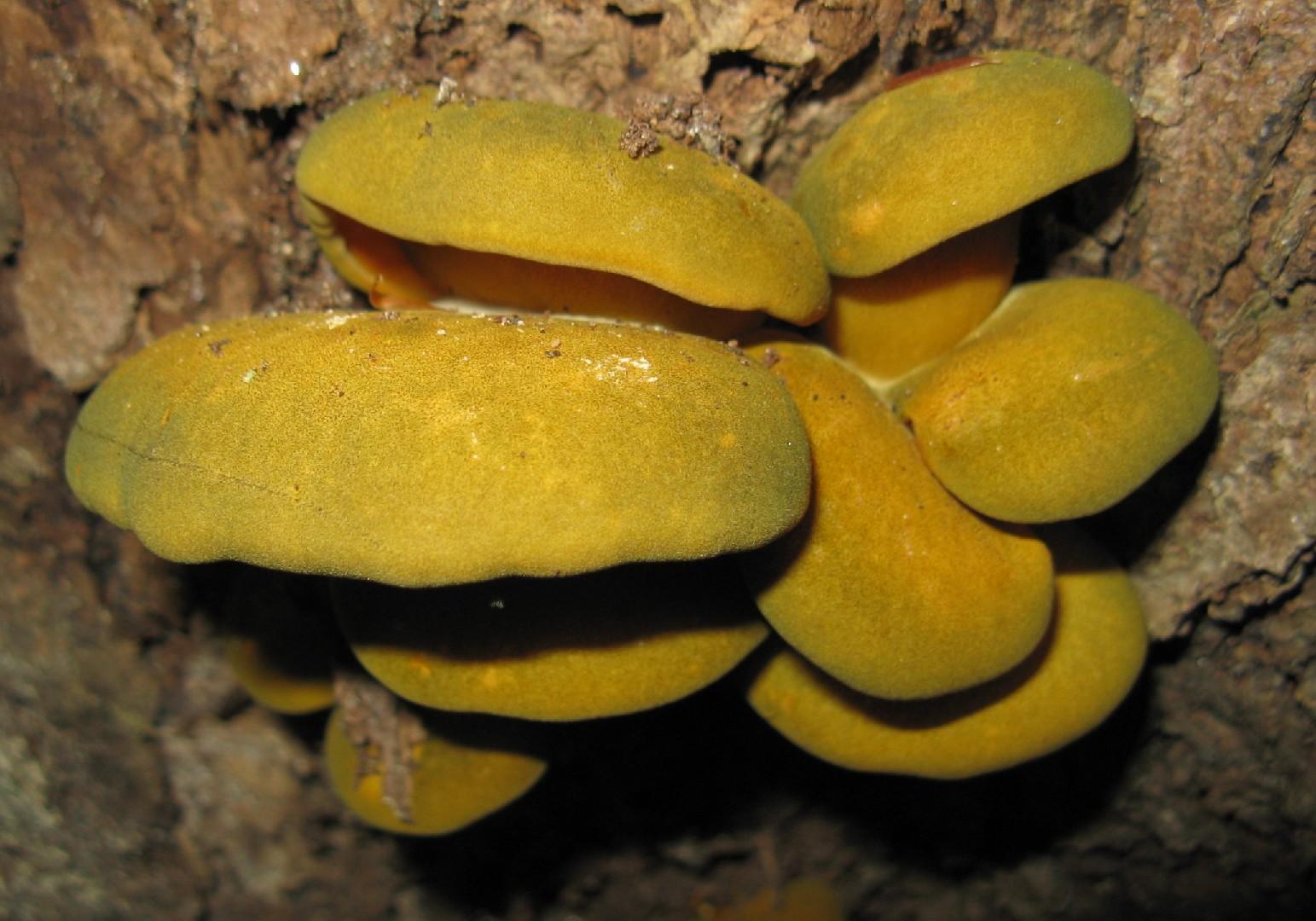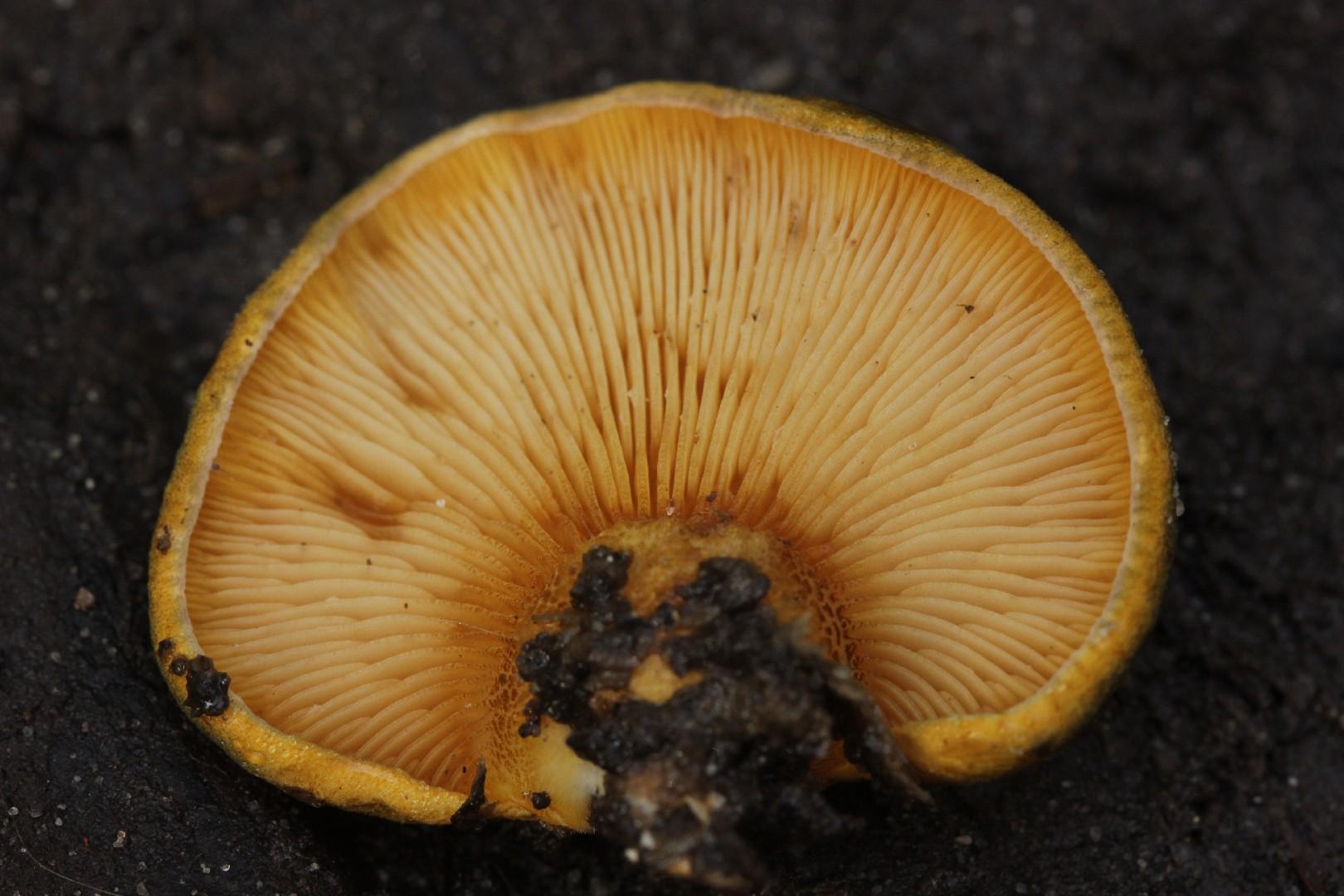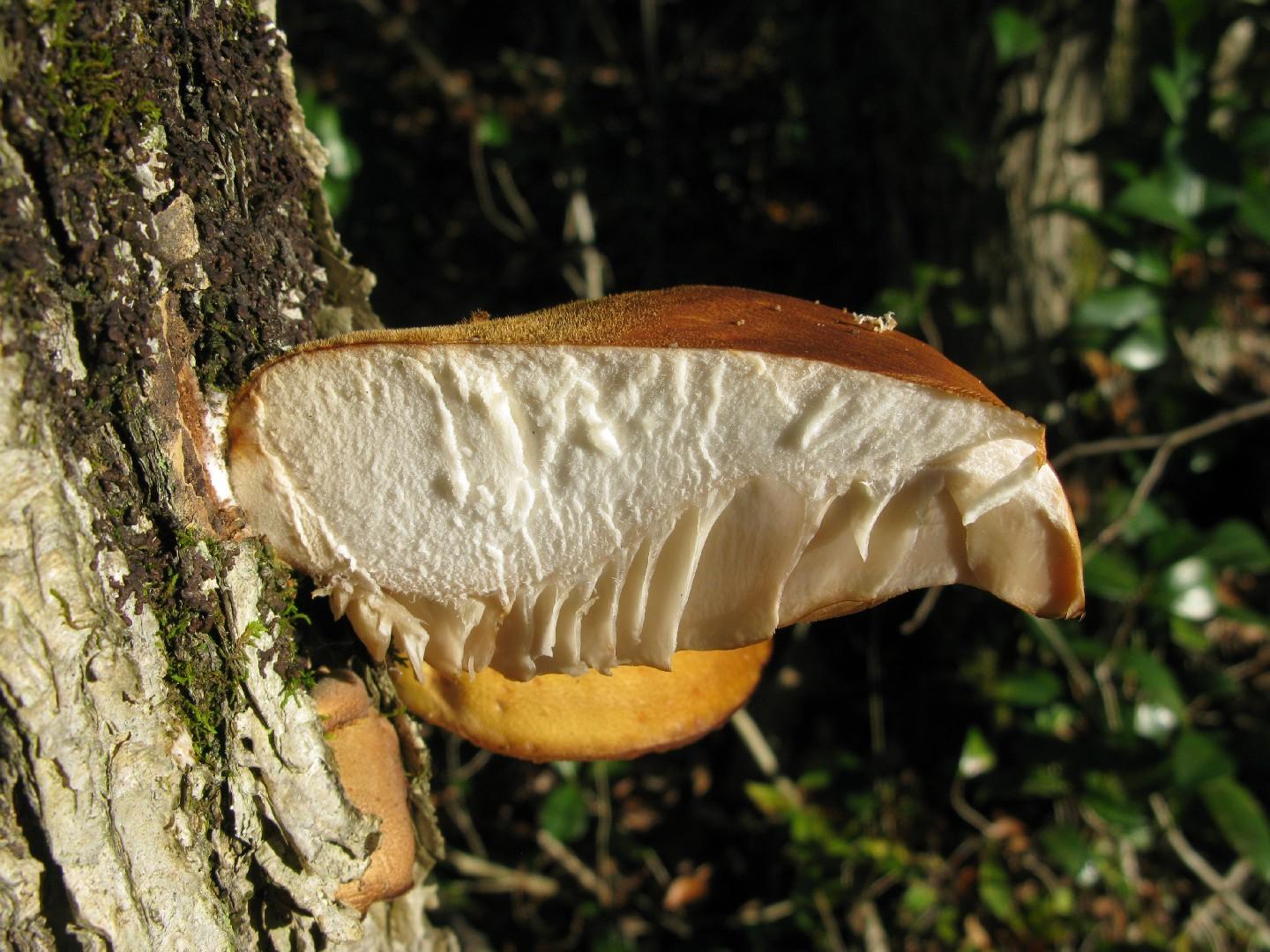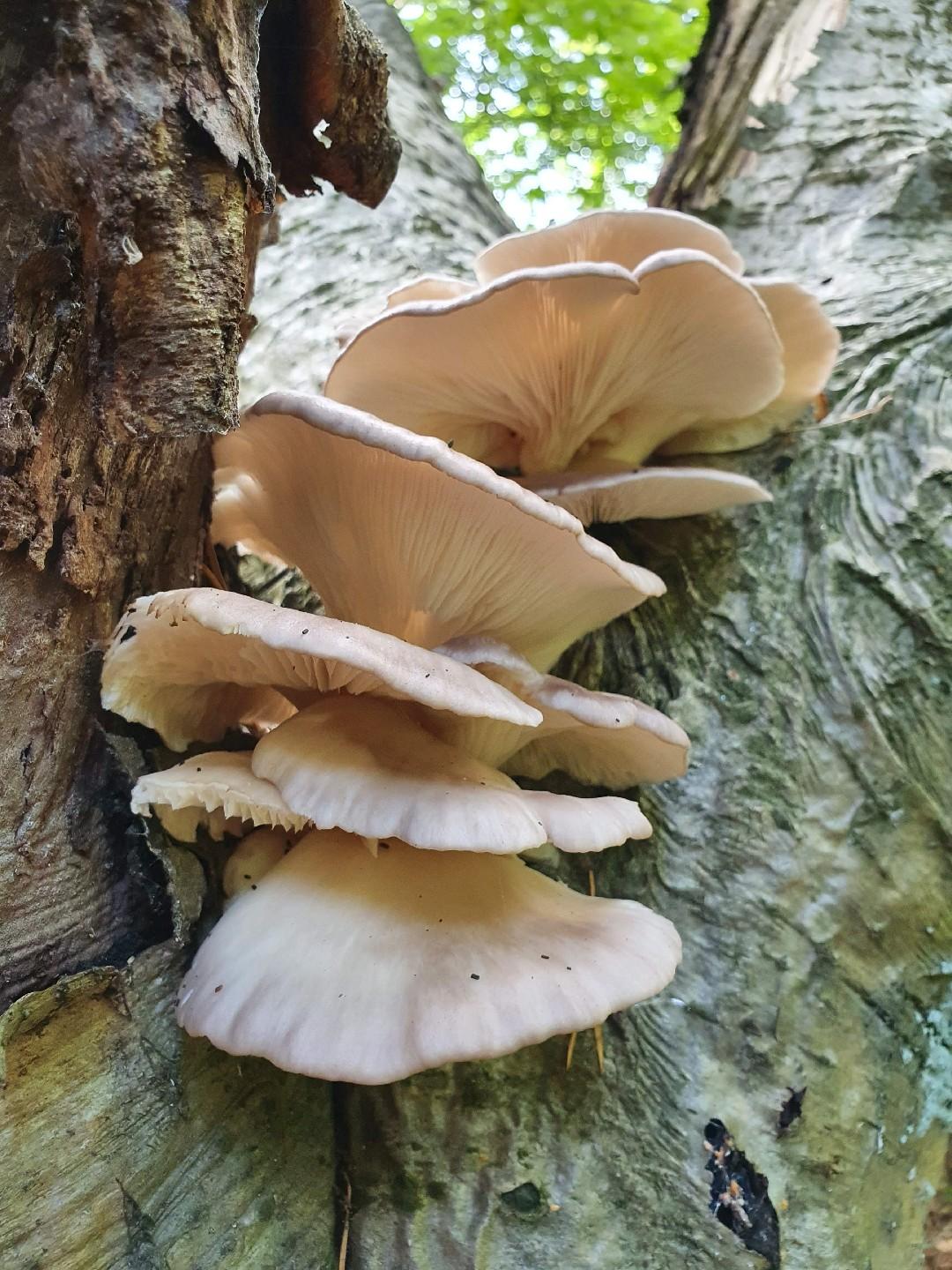



Late fall oyster mushroom
Panellus serotinus
A species of Oysterlings. Also known as Mukitake.
As its name suggests, the late fall oyster mushroom is among the final fungi to appear during the frost-free period. Despite not being a genuine oyster mushroom, it shares a notable likeness to them. This mushroom thrives on hardwoods and features a viscous cap that helps conserve moisture and ward off insects.
In This Article
Attributes of Late fall oyster mushroom
Cap Diameter
3 - 11 cm
Height
1 - 5 cm
Cap
Cap 3 - 11 cm across; weakly convex; ocher-olive to dark olive-brown; surface smooth
Cap Shape
Convex, Flat, Depressed
Cap Surfaces
Smooth, Slimy or slightly sticky
Gills
Attached, decurrent; close; orangish to yellowish buff
Gill Attachment
Decurrent
Stem
Ocher to orange to orange-buff
Flesh
Tough, rubbery; whitish; unchanging when sliced
Spore Print Color
Pale yellowish to whitish
Odor
Mildly mushroomy but not distinctive.
Body Color
BrownGreenYellow
Flesh Bruises
The flesh or milk does not discolor when bruised or cut.
Growth Form
Solitary, Gregarious, Clustered
Nutrient Gathering
Saprophytic
Substrate
Dead Woods
Occurence Habitats
Deciduous Woodland, Coniferous Woodland
Species Status
Widely distributed
Endangered Species
No
Scientific Classification of Late fall oyster mushroom
Phylum
Club fungi
Class
Mushroom-forming fungi
Order
Gilled fungi
Family
Bonnet mushrooms
Genus
Oysterlings
Toxicity and Edibility of Late fall oyster mushroom
Is Late fall oyster mushroom Toxic?
Refrain from consuming late autumn oyster mushrooms, as they could harbor harmful toxins.


